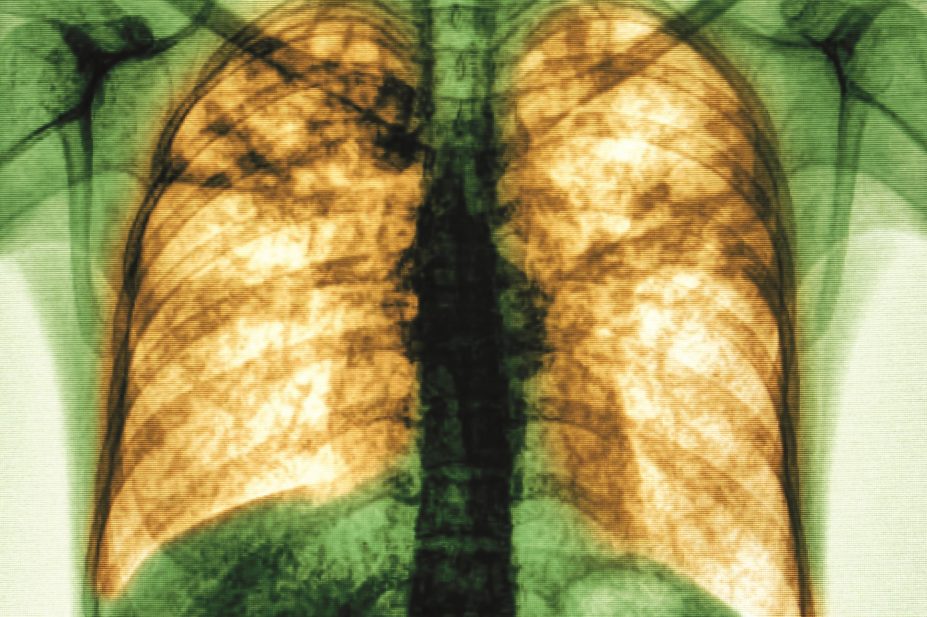
Shutterstock.com
Corticosteroids significantly reduce mortality, the need for mechanical ventilation and hospital stay in adults with community-acquired pneumonia (CAP), according to researchers who reviewed trials of the intervention between 2010 and 2015.
The review of 13 randomised trials involving more than 2,000 patients, published in the Annals of Internal Medicine
[1]
on 11 August 2015, found that systemic corticosteroid therapy may reduce mortality by 3% in hospitalised adults with CAP.
“The apparent benefits of systemic corticosteroids in CAP are large enough — a decrease in hospital stay of approximately one day and an absolute reduction in risk for mechanical ventilation of 5% — to be considered important by many,” say Reed Siemieniuk of McMaster University, Ontario, Canada, and colleagues. “Given the frequency of CAP, and thus the associated economic burden, routine use of corticosteroids for CAP could result in considerable cost savings.”
Lower respiratory infections are the second most common cause of premature mortality globally. In developed countries, hospital admission for CAP is common and is often associated with acute respiratory distress syndrome requiring mechanical ventilation, and with significant mortality.
“Seldom do we see a major advance in treatment of a condition as common as CAP,” says Gordon Guyatt, the study’s senior investigator and a professor of clinical epidemiology and biostatistics at McMaster. “Corticosteroids over short periods are safe, and we now know that they achieve important benefits in a serious and common medical illness.”
However, Tobias Welte, whose study of the clinical and economic burden of CAP[2]
is cited in Siemieniuk’s paper, questions the review’s findings.
“This is in my mind the typical problem of systematic reviews when they are performed by statisticians and methodologists,” says Welte, professor of pulmonary medicine and head of the department of pulmonary and infectious diseases at Hanover University School of Medicine, Germany.
None of the studies focusing on corticosteroid treatment in CAP, including those in Siemieniuk’s review, have a strong outcome parameter such as mortality, argues Welte. “They all use surrogates, such as length of stay in hospital or time to reach clinical stability.
“The problem with these endpoints is that they are either not well defined (discharge from an intensive care unit is a subjective physician decision) or, with regard to the composite endpoints, are dominated by weak parameters,” says Welte. Among the studies that were reviewed is one that relies on chest X-ray findings, which he says are well known to be delayed and do not correspond with clinical parameters. Another, he warns, looked at patient temperature, which is influenced by steroids regardless of underlying disease.
In addition, complains Welte, many of the studies included patients with a good prognosis of CAP, making an additional steroid treatment “more questionable”.
So, while Siemienuk and colleagues call on decision-makers to “seriously consider the use of corticosteroids in patients hospitalised with CAP”, Welte calls for more serious consideration of reviews.
“Reviews do not normally address the limitations of randomised controlled trials,” concludes Welte. “In my mind it is time for a more critical view on this kind of review.”
References
[1] Siemieniuk RAC, Meade MO, Alonso-Coello P et al. Corticosteroid therapy for patients hospitalized with community-acquired pneumonia: a systematic review and meta-analysis. Annals of Internal Medicine 2015. doi:10.7326/M15-0715.
[2] Welte T, Torres A & Nathwani D. Clinical and economic burden of community-acquired pneumonia among adults in Europe. Thorax 2012;67:71–79. doi:10.1136/thx.2009.129502.


